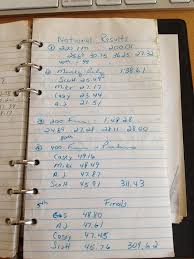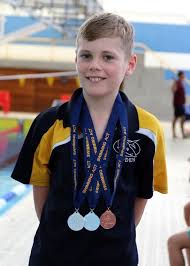A question often posed to coaches is “what do I need to do to improve my swimming?” Although we could launch into bio mechanical analyses. Then break down all the components of the strokes until they’re reduced to minutiae, the main theme is mindfulness. Pay attention to what you’re doing, focus on doing it well, and you’ll see improvement. The body is controlled by the mind, so training your mind to be a better swimmer is a reasonable course of action for swimming success.
 Mental skills are actually really simple to train. Thinking about what you want to do has been proven to be as effective as actually doing it; Marc Jeannerod and Jean Decety’s 1995 article “Mental motor imagery: a window into the representational stages of action” tested the theory by having individuals train a five-finger piano pattern either mentally or physically,and found that results were largely similar between groups. A similar study by Ranganathan et. al. in 2003 yielded similar results. This study indicated that a 35% success rate in “mental training” candidates versus 53% in “physical training” candidates performing voluntary muscle contractions in their little fingers, while the “no training” control group showed no significant changes.
Mental skills are actually really simple to train. Thinking about what you want to do has been proven to be as effective as actually doing it; Marc Jeannerod and Jean Decety’s 1995 article “Mental motor imagery: a window into the representational stages of action” tested the theory by having individuals train a five-finger piano pattern either mentally or physically,and found that results were largely similar between groups. A similar study by Ranganathan et. al. in 2003 yielded similar results. This study indicated that a 35% success rate in “mental training” candidates versus 53% in “physical training” candidates performing voluntary muscle contractions in their little fingers, while the “no training” control group showed no significant changes.
To journal your way to swimming success, you need to harness your mental capacity for learning motor skills. All you need to get started is a blank journal, a writing implement, and the motivation to spend ten minutes after practice writing about it.
Step 1: Log your workout
Even if you can’t remember the entire workout, write down what you do recall. This gives you the chance to reflect on your effort and organize your thoughts about it.
Step 2: Rate your sets
Once you’ve written out the workout, go back and rate each set. You can assign a numerical value to them. Another simple thing could be place a check mark or an X next to them, but make sure to rate based on your perception of how the sets went. It’s natural to rate based on what you liked and didn’t like, but that’s not the goal. You want to record whether or not your effort was valuable to your training.
Step 3: Record your feelings
Look over your ratings and write down a few words about the sets that jump out at you. If you had a set that rated a 0 or had a heavy-handed X next to it, ignore it. It’s best not to focus on the negative sets too much. Instead, make an effort to write more about the positive sets, making sure to focus on feeling: “felt strong” and “breathing pattern felt easy”are examples of how to record positive training feelings.
a heavy-handed X next to it, ignore it. It’s best not to focus on the negative sets too much. Instead, make an effort to write more about the positive sets, making sure to focus on feeling: “felt strong” and “breathing pattern felt easy”are examples of how to record positive training feelings.
Step 4: Record your thoughts
This step is crucial because it provides a road map for mental imagery. Once you’ve finished recording feelings, think back to the thoughts running through your head during the positive sets. Imagine you are singing a song in your head, write down the title. Think about what you were focused for example .your stroke count, write down what it was. If your mind was blank and you were focused on the feeling of every stroke, write it down! Regardless of what the thoughts were, they contributed to a good performance and are worth remembering.
Step 5: Relive the swimming success
 Look through your swimming success journal before practices or meets to remind yourself of the thoughts and feelings you had during your best moments in the pool. Better yet, use those cues to make a mental image of your upcoming workout; picture yourself in the water, swimming your best, nailing every set, and feeling good about it afterwards.
Look through your swimming success journal before practices or meets to remind yourself of the thoughts and feelings you had during your best moments in the pool. Better yet, use those cues to make a mental image of your upcoming workout; picture yourself in the water, swimming your best, nailing every set, and feeling good about it afterwards.
The best thing about journalling is that it’s personal. No one else has the same thoughts or feelings as you. So your journal is a perfect reflection of your own swimming success stories. You can even use the same five steps to journal about your performances at a swim meet. This will help you to create mental images of your races to run through before you get onto the blocks. Play that song in your head, shut your eyes, and see yourself swimming your best. Chances are you’ll have yet another good performance to write about when the race is over.
FROM SARAH MACDONALD
If you want more content like this then sign up for our
FREE MONTHLY NEWSLETTER
featuring articles like these and more
and Email “I’m in” to
Subscribe@swimbetterhq.com

